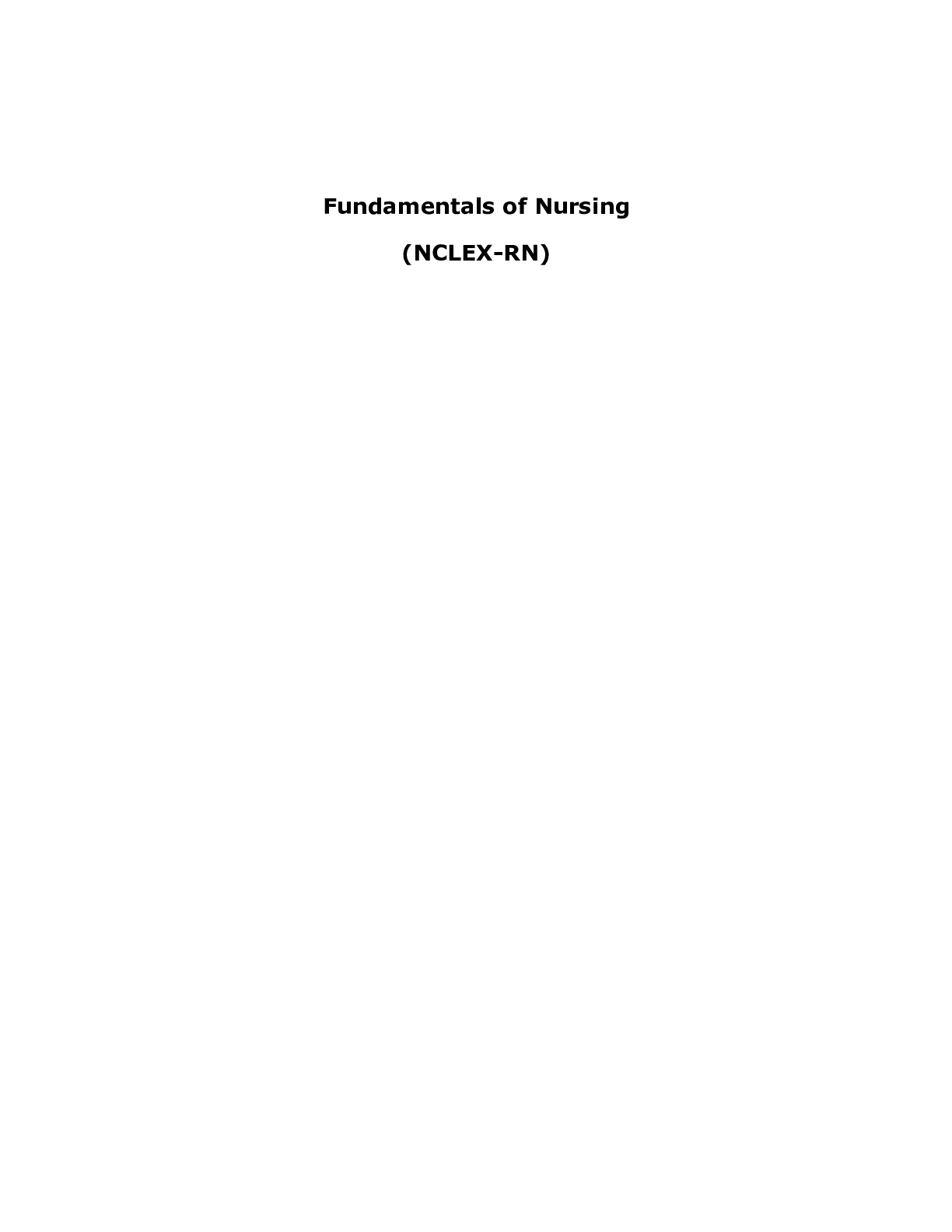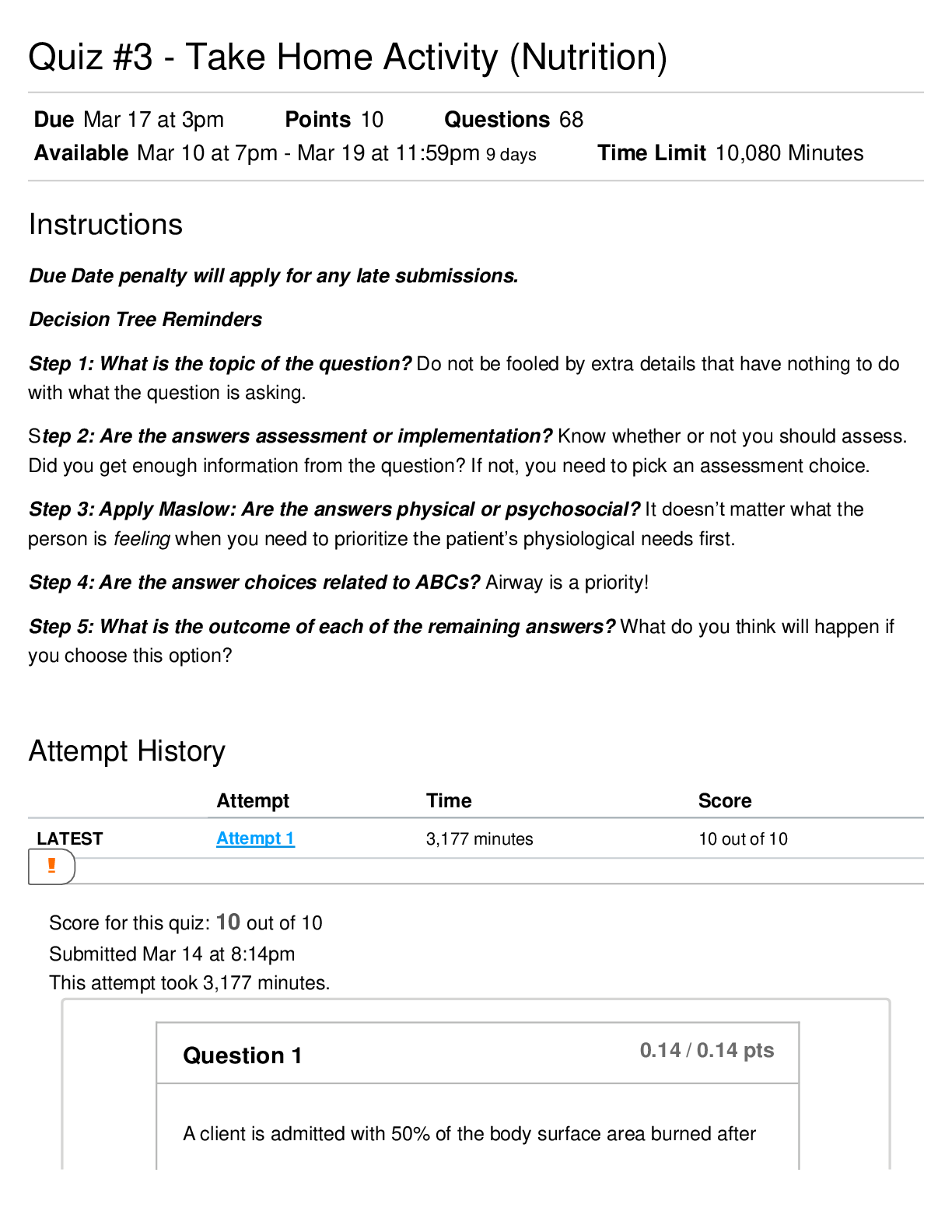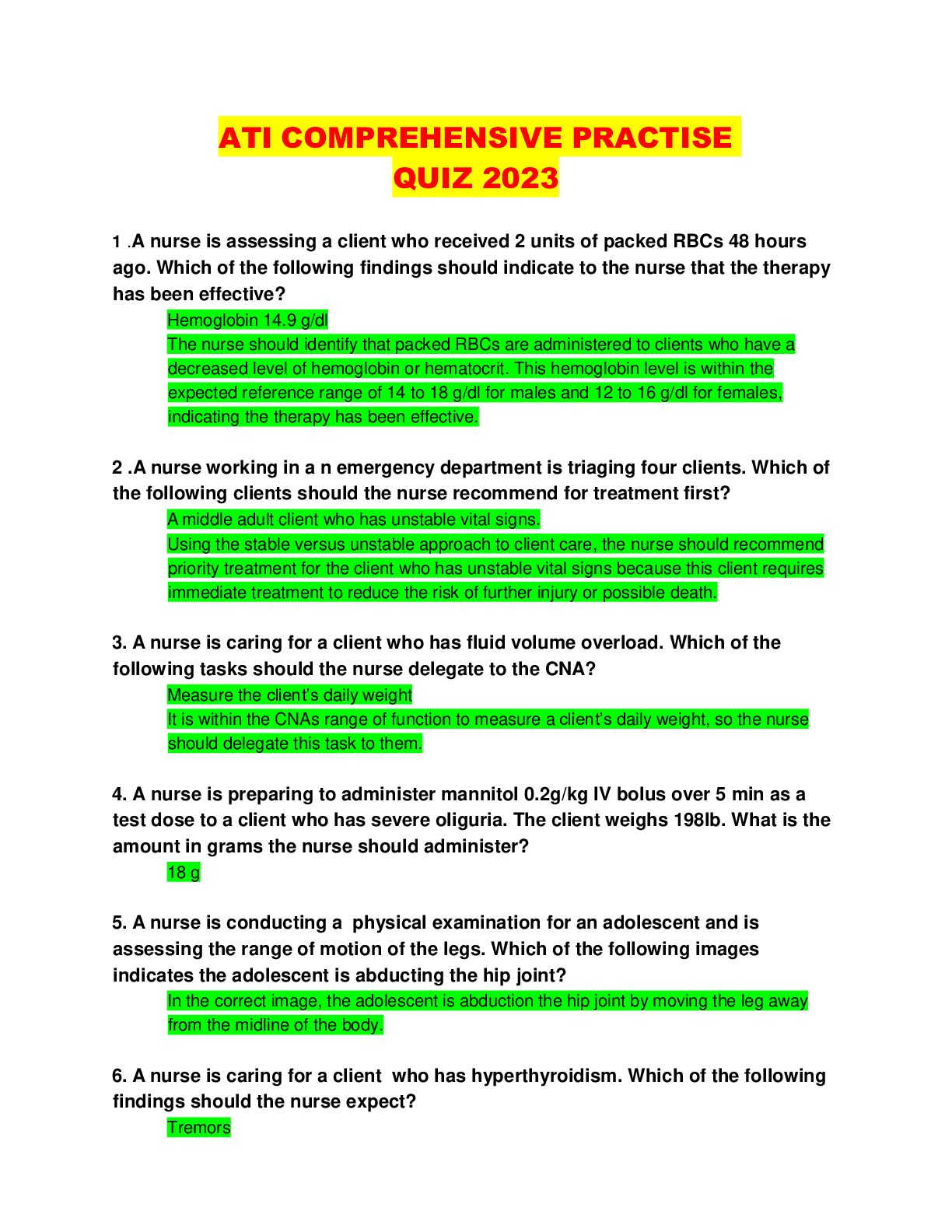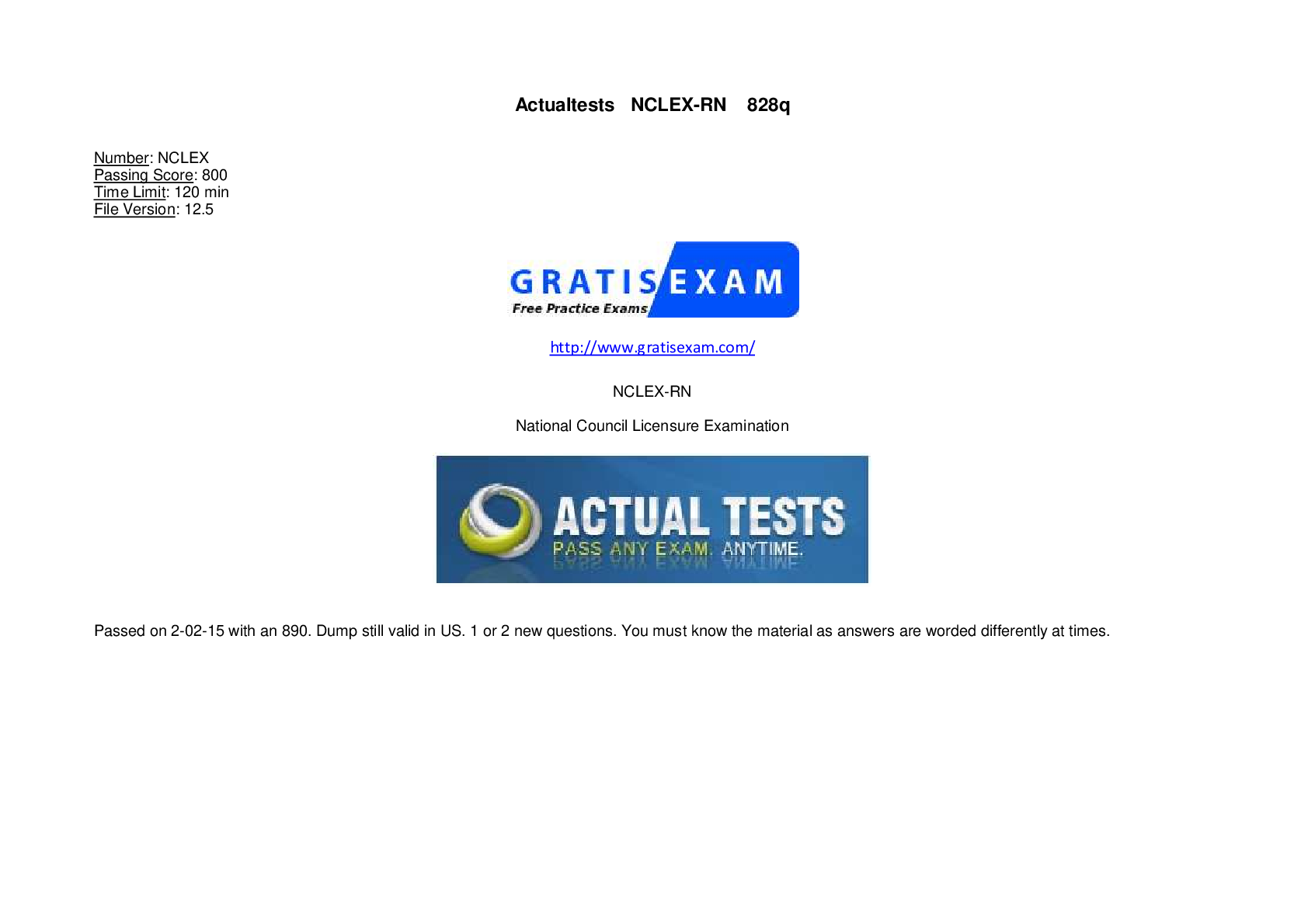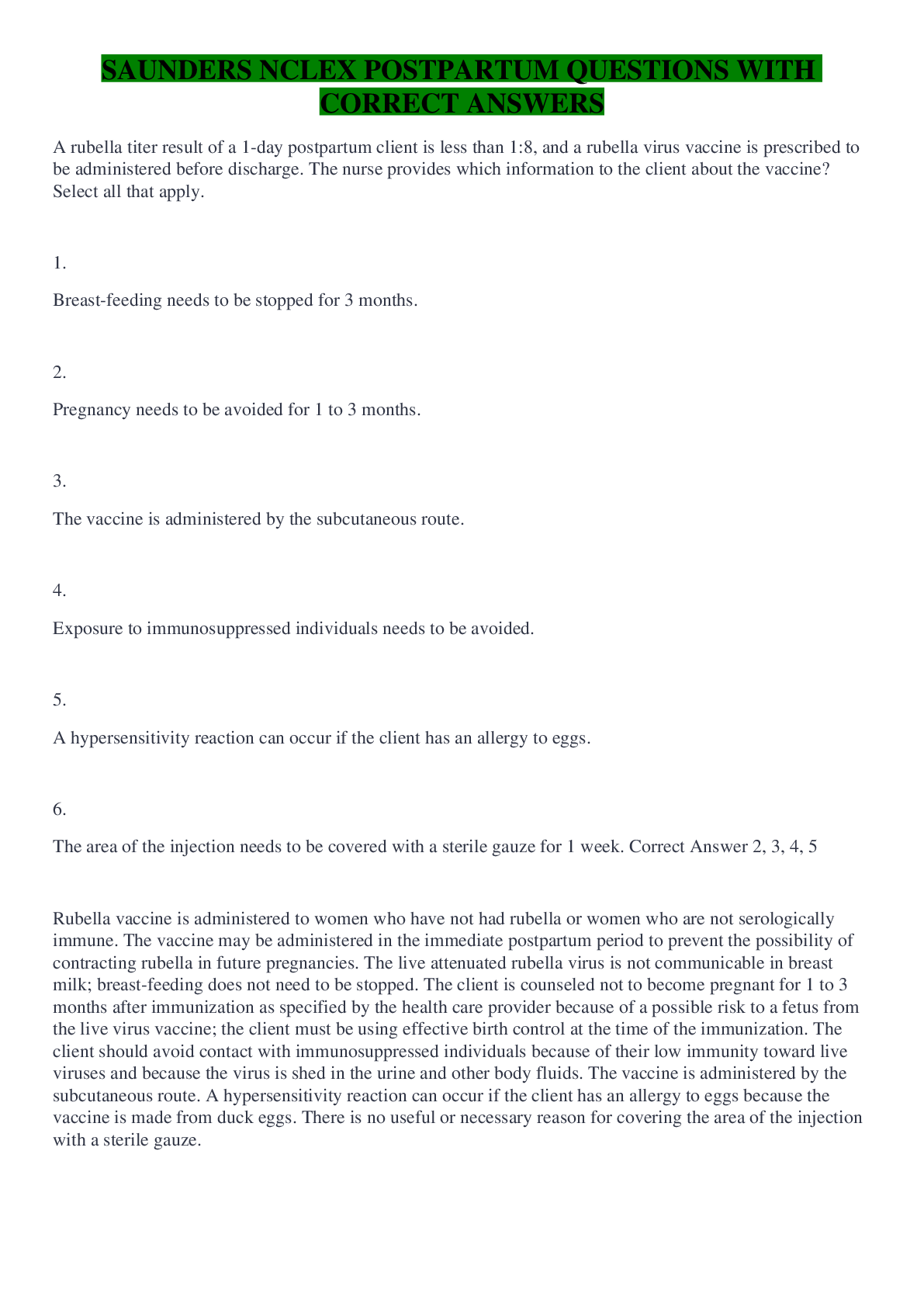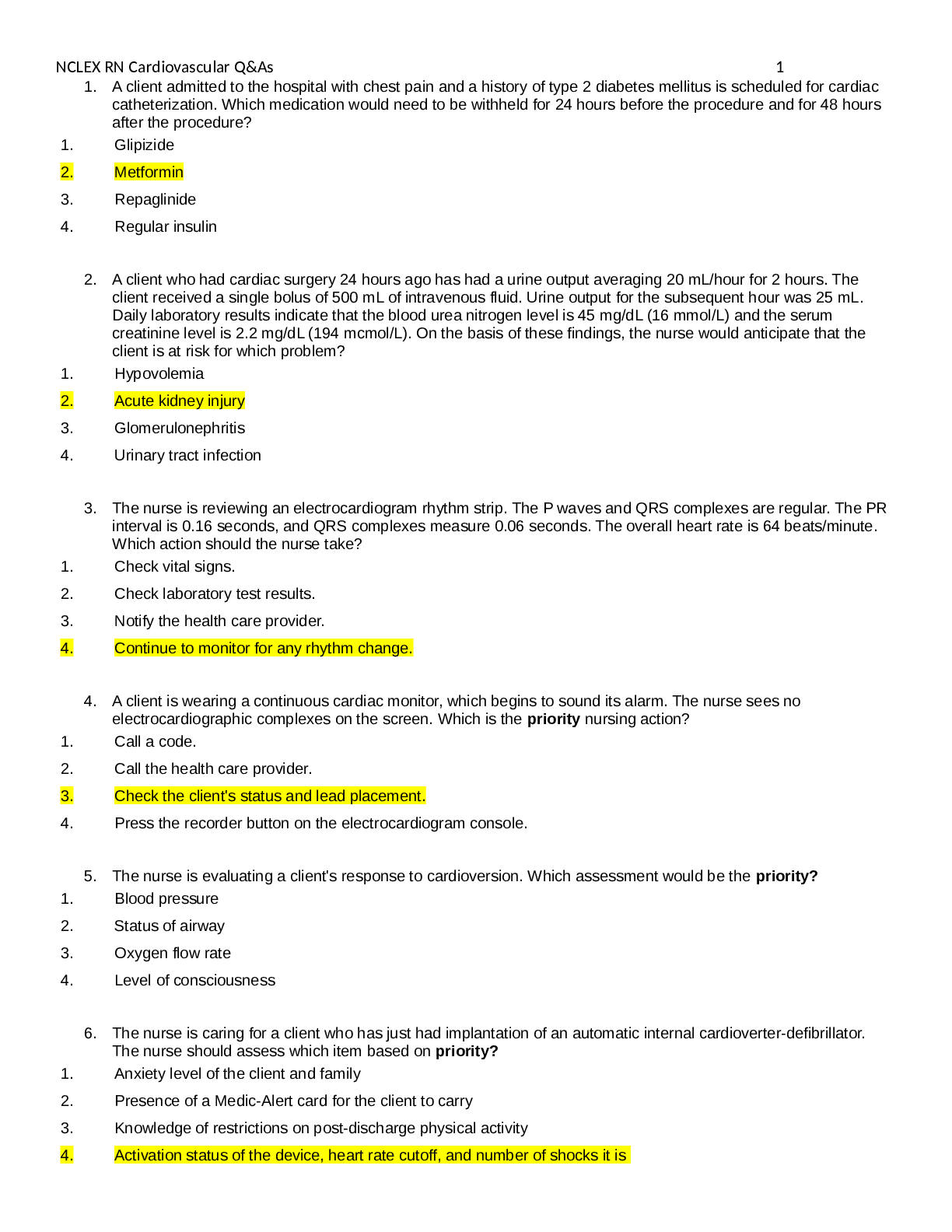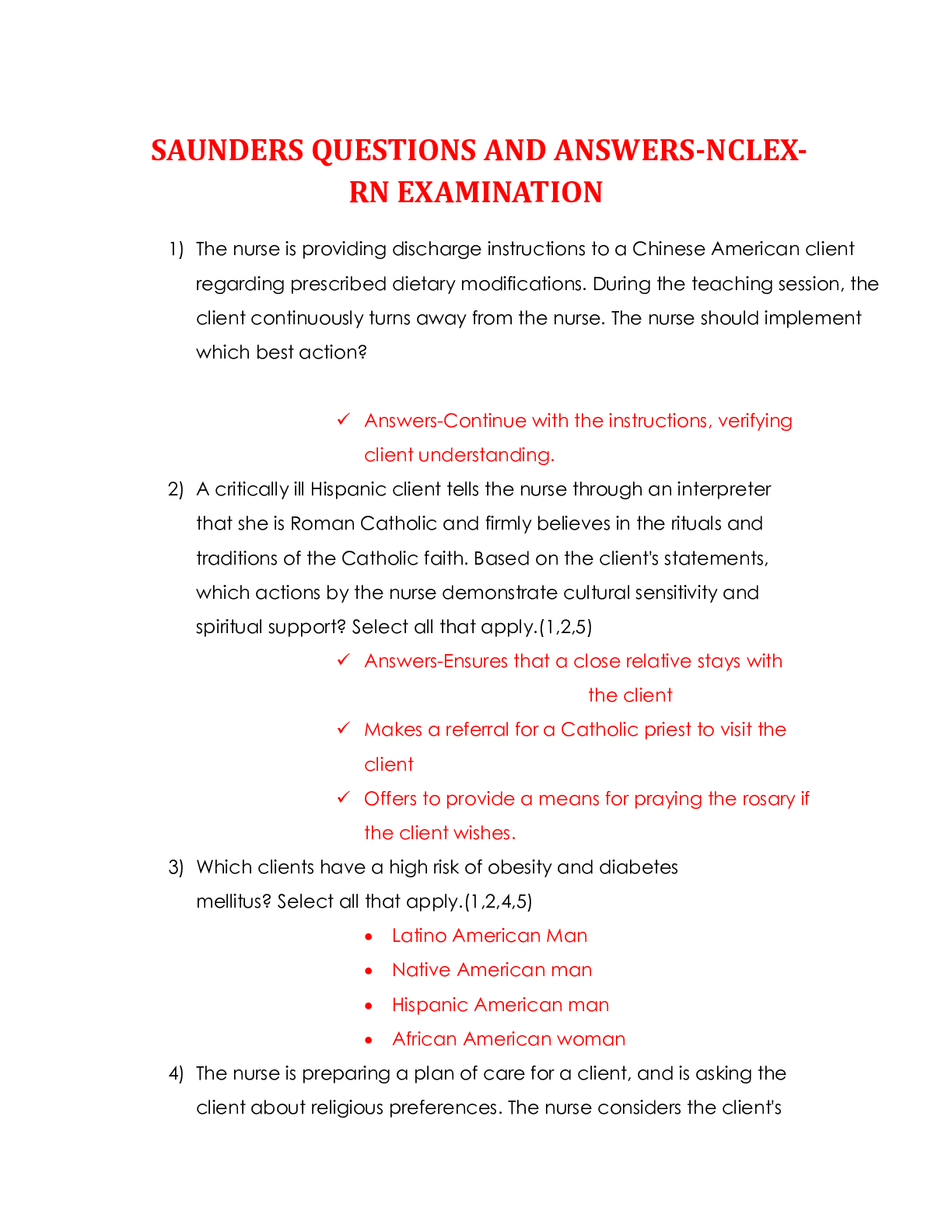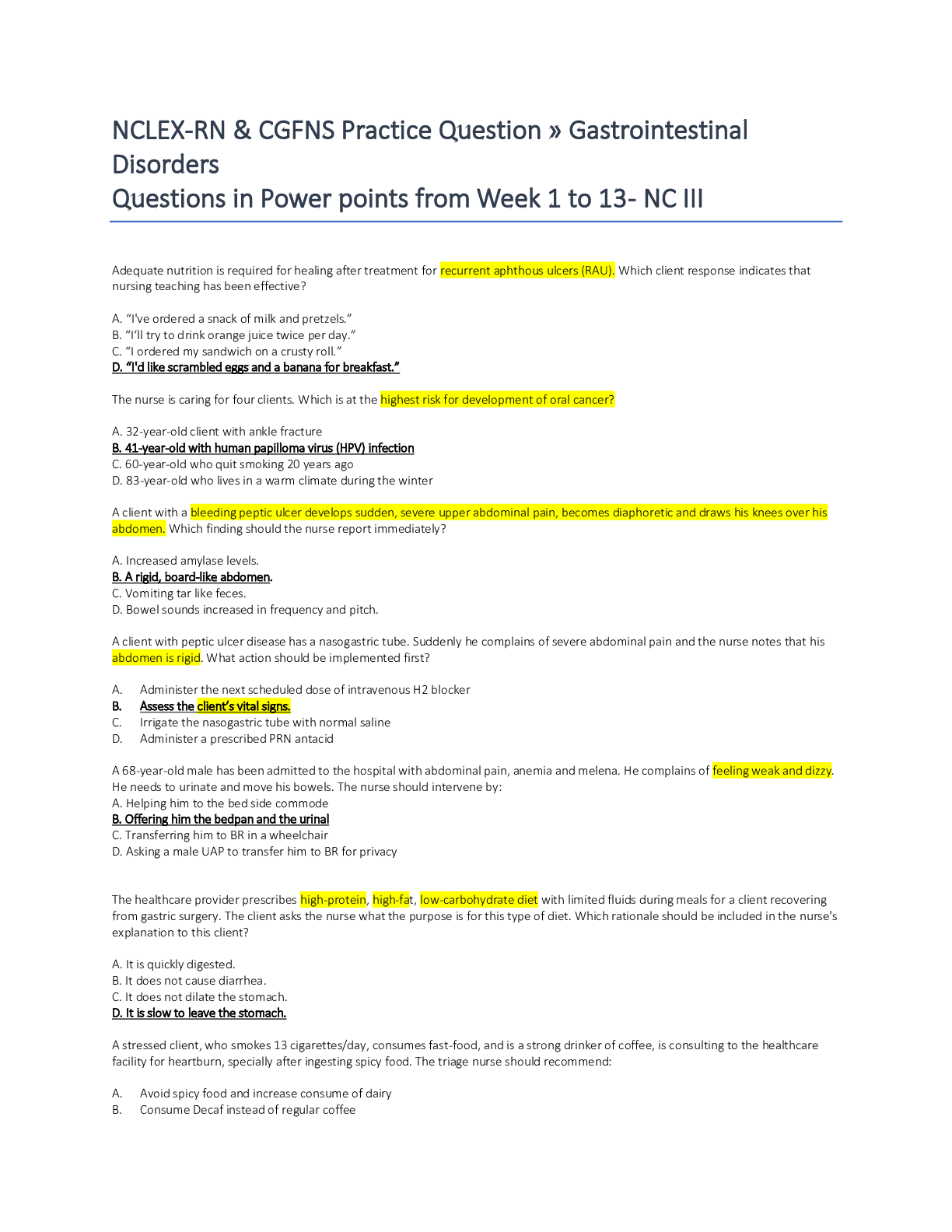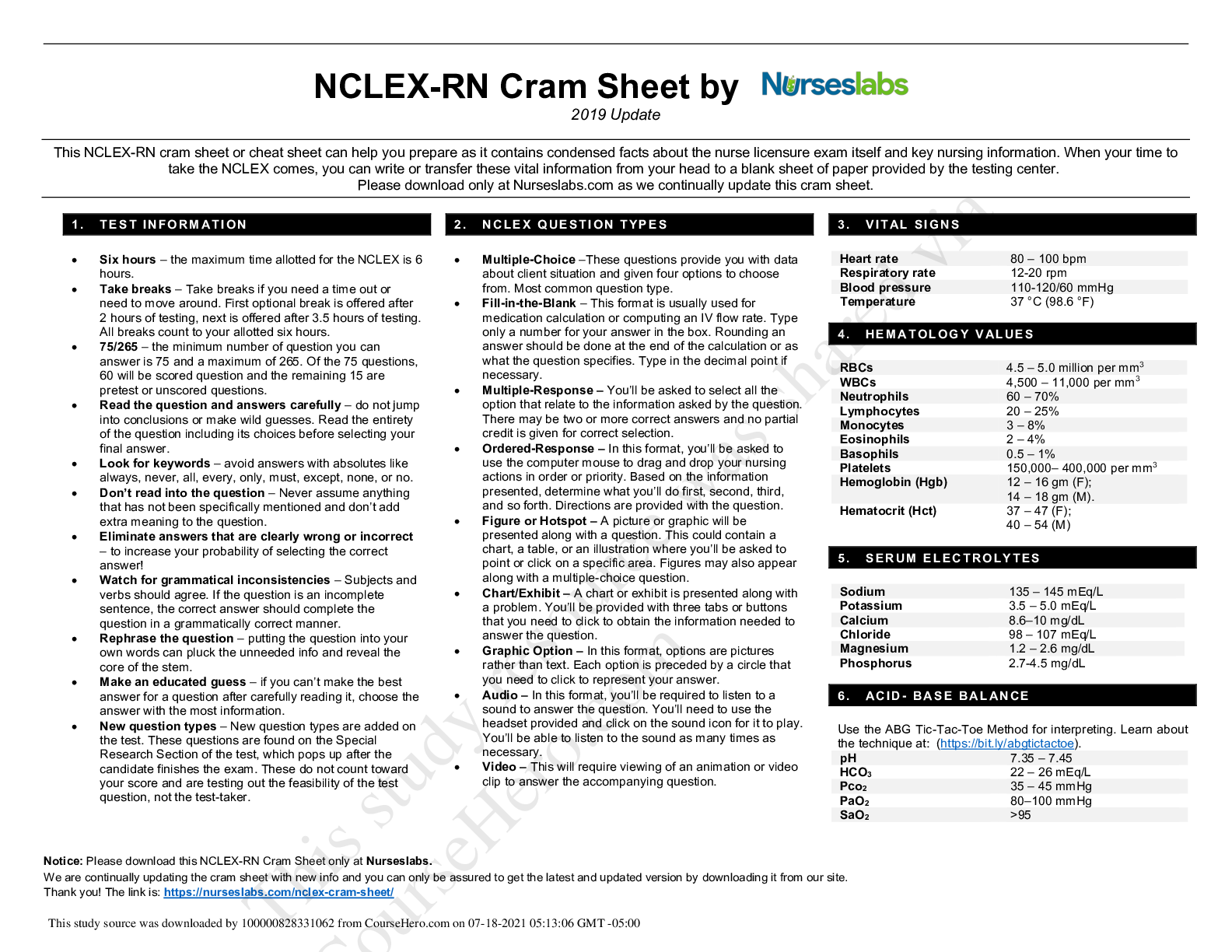*NURSING > NCLEX-RN > National Council Licensure Examination(NCLEX-RN) questions with correct answers tu boost your grades (All)
National Council Licensure Examination(NCLEX-RN) questions with correct answers tu boost your grades
Document Content and Description Below
Exam : NCLEX-RN Title : National Council Licensure Examination(NCLEX-RN) Vendor : NCLEX Version : V12.35 NO.1 A depressed client is seen at the mental health center for follow-up... after an attempted suicide 1 week ago. She has taken phenelzine sulfate (Nardil), a monoamine oxidase (MAO) inhibitor, for 7 straight days. She states that she is not feeling any better. The nurse explains that the drug must accumulate to an effective level before symptoms are totally relieved. Symptom relief is expected to occur within: A. 10 days B. 2-4 weeks C. 2 months D. 3 months NO.2 Cystic fibrosis is transmitted as an autosomal recessive trait. This means that: A. Mothers carry the gene and pass it to their sons B. Fathers carry the gene and pass it to their daughters C. Both parents must have the disease for a child to have the disease D. Both parents must be carriers for a child to have the disease NO.3 A 24-year-old client presents to the emergency department protesting "I am God." The nurse identifies this as a: A. Delusion B. Illusion C. Hallucination D. Conversion NO.4 In acute episodes of mania, lithium is effective in 1-2 weeks, but it may take up to 4 weeks, or even a few months, to treat symptoms fully. Sometimes an antipsychotic agent is prescribed during the first few days or weeks of an acute episode to manage severe behavioral excitement and acute psychotic symptoms. In addition to the lithium, which one of the following medications might the physician prescribe? A. Diazepam (Valium) B. Haloperidol (Haldol) C. Sertraline (Zoloft) D. Alprazolam (Xanax) NO.5 A violent client remains in restraints for several hours. Which of the following interventions is most appropriate while he is in restraints? A. Give fluids if the client requests them. B. Assess skin integrity and circulation of extremities before applying restraints and as they are removed. C. Measure vital signs at least every 4 hours. D. Release restraints every 2 hours for client to exercise. NO.6 The pediatrician has diagnosed tinea capitis in an 8- year-old girl and has placed her on oral griseofulvin. The nurse should emphasize which of these instructions to the mother and/or child? A. Administer oral griseofulvin on an empty stomach for best results. B. Discontinue drug therapy if food tastes funny. C. May discontinue medication when the child experiences symptomatic relief. D. Observe for headaches, dizziness, and anorexia. NO.7 A client with cirrhosis of the liver becomes comatose and is started on neomycin 300 mg q6h via nasogastric tube. The rationale for this therapy is to: A. Prevent systemic infection B. Promote diuresis C. Decrease ammonia formation D. Acidify the small bowel NO.8 A 5-year-old has just had a tonsillectomy and adenoidectomy. Which of these nursing measures should be included in the postoperative care? A. Encourage the child to cough up blood if present. B. Give warm clear liquids when fully alert. C. Have child gargle and do toothbrushing to remove old blood. D. Observe for evidence of bleeding. NO.9 An 80-year-old male client with a history of arteriosclerosis is experiencing severe pain in his left leg that started approximately 20 minutes ago. When performing the admission assessment, the nurse would expect to observe which of the following: A. Both lower extremities warm to touch with 2_pedal pulses B. Both lower extremities cyanotic when placed in a dependent position C. Decreased or absent pedal pulse in the left leg D. The left leg warmer to touch than the right leg NO.10 A 16-month-old infant is being prepared for tetralogy of Fallot repair. In the nursing assessment, which lab value should elicit further assessment and requires notification of physician? A. pH 7.39 B. White blood cell (WBC) count 10,000 WBCs/mm3 C. Hematocrit 60% D. Bleeding time of 4 minutes NO.11 A male client is experiencing extreme distress. He begins to pace up and down the corridor. What nursing intervention is appropriate when communicating with the pacing client? A. Ask him to sit down. Speak slowly and use short, simple sentences. B. Help him to recognize his anxiety. C. Walk with him as he paces. D. Increase the level of his supervision. ................................................................................continued,............................................................................................ [Show More]
Last updated: 1 year ago
Preview 1 out of 317 pages

Reviews( 0 )
Document information
Connected school, study & course
About the document
Uploaded On
Nov 01, 2021
Number of pages
317
Written in
Additional information
This document has been written for:
Uploaded
Nov 01, 2021
Downloads
0
Views
52

